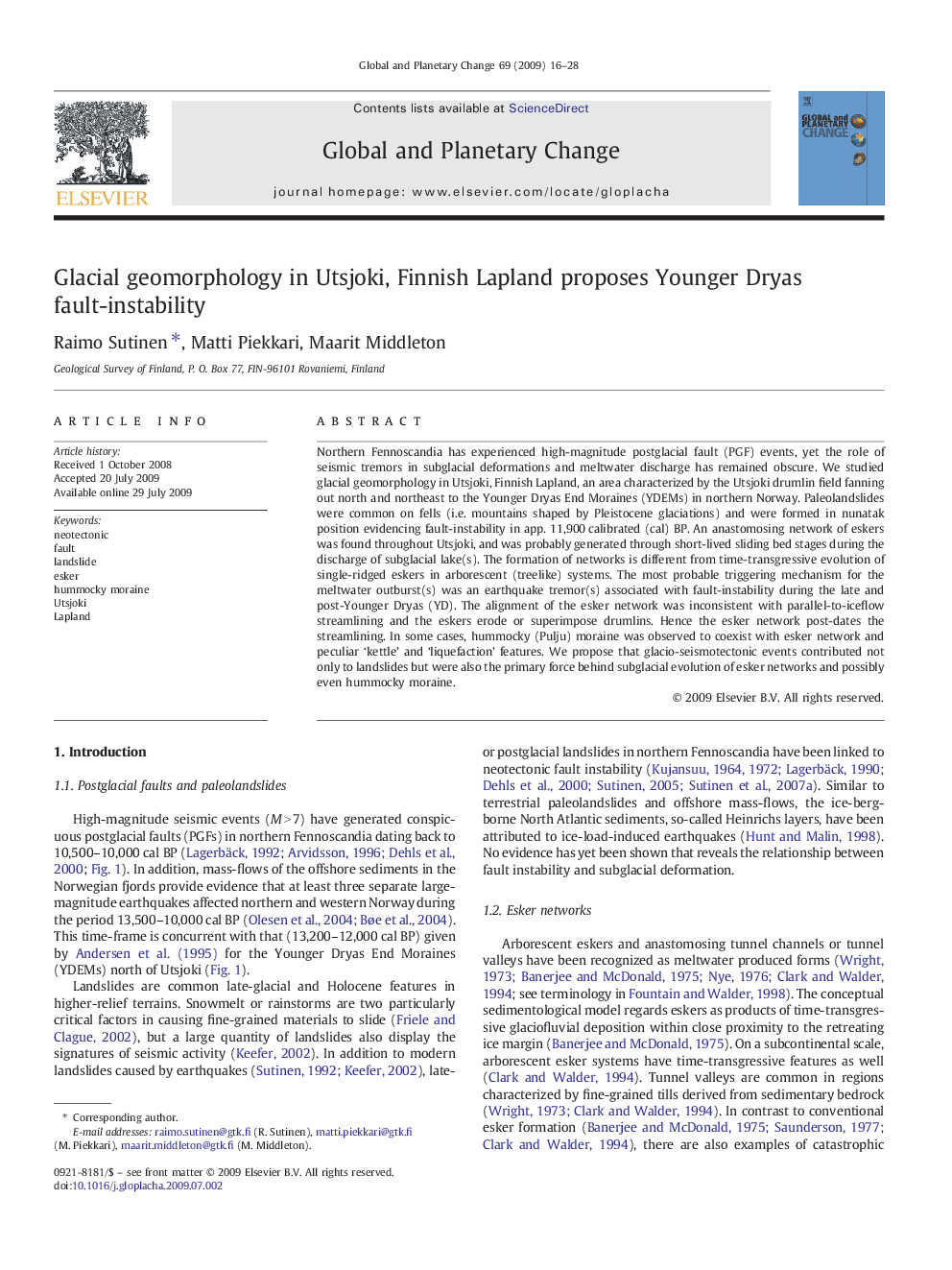| Article ID | Journal | Published Year | Pages | File Type |
|---|---|---|---|---|
| 4464020 | Global and Planetary Change | 2009 | 13 Pages |
Northern Fennoscandia has experienced high-magnitude postglacial fault (PGF) events, yet the role of seismic tremors in subglacial deformations and meltwater discharge has remained obscure. We studied glacial geomorphology in Utsjoki, Finnish Lapland, an area characterized by the Utsjoki drumlin field fanning out north and northeast to the Younger Dryas End Moraines (YDEMs) in northern Norway. Paleolandslides were common on fells (i.e. mountains shaped by Pleistocene glaciations) and were formed in nunatak position evidencing fault-instability in app. 11,900 calibrated (cal) BP. An anastomosing network of eskers was found throughout Utsjoki, and was probably generated through short-lived sliding bed stages during the discharge of subglacial lake(s). The formation of networks is different from time-transgressive evolution of single-ridged eskers in arborescent (treelike) systems. The most probable triggering mechanism for the meltwater outburst(s) was an earthquake tremor(s) associated with fault-instability during the late and post-Younger Dryas (YD). The alignment of the esker network was inconsistent with parallel-to-iceflow streamlining and the eskers erode or superimpose drumlins. Hence the esker network post-dates the streamlining. In some cases, hummocky (Pulju) moraine was observed to coexist with esker network and peculiar ‘kettle’ and ‘liquefaction’ features. We propose that glacio-seismotectonic events contributed not only to landslides but were also the primary force behind subglacial evolution of esker networks and possibly even hummocky moraine.
